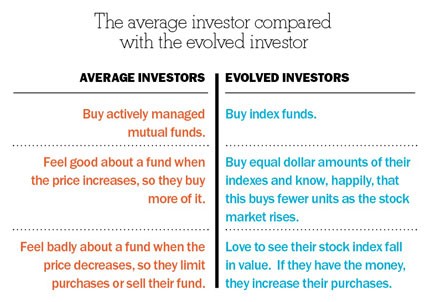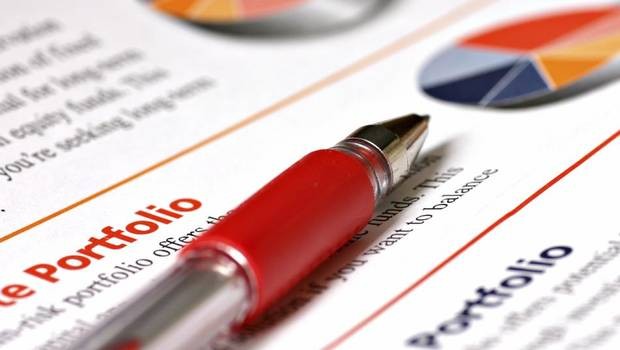Too many mutual funds can sabotage your portfolio
Post on: 18 Сентябрь, 2015 No Comment

Too many mutual funds can sabotage your portfolio
By PREET BANERJEE
Friday, February 14, 2014
Investors, how many funds do you need in your portfolio? There are more mutual funds than stocks available in Canada. A simple search on the Globe Investor Fund Filter yields 18,327 choices, if you include the various share classes many funds have.
Over the years, I’ve seen many investors’ statements where the number of funds listed was in the double digits. The worst had 11 Canadian equity funds: different fund names, but essentially the same underlying investments.
Owning too many mutual funds is a classic sign that there is no comprehensive approach to your portfolio strategy. Simply looking at the funds’ top 10 holdings may reveal a large degree of overlap. The more overlap you have, the closer you’ll get to hugging the index. At that point, why not just buy one index fund and cut your fees in half, or more?
Some would argue that even owning one mutual fund would be one too many. Mutual funds are the investment vehicle of choice when using a financial adviser, and have also typically been associated with active investment strategies. The value of advisers and of active management strategies have come under increasing scrutiny over the years.
Actually, mutual funds can be actively or passively managed, and they can be bought with or without an adviser. In fact, exchange-traded funds (ETFs) are not strictly indexing products and can also be actively or passively managed. If you look at the prospectus of Canada’s largest ETF provider, you’ll see that iShares ETFs are considered mutual funds under various securities legislation across Canada.
Before we can answer the question of how many are enough, let’s talk about what constitutes a prudent portfolio. There are generally a few key ingredients: diversification around the world, and a mix between equities and fixed income.
Investors routinely have what is known as a home bias. We tend to invest more of our portfolio here at home. In fact, some investors limit their opportunities strictly to investments that are found on the TSX. Recent estimates put the Toronto Stock Exchange’s market capitalization at roughly $2-trillion, about seven times smaller than the New York Stock Exchange. Canada represents just over 3 per cent of the world’s total public stock-market capitalization. Diversifying across the globe offers access to markets that may grow faster than Canada going forward, but more importantly, may move in an entirely different direction from Canadian stocks — a real benefit.
Let’s say you had a globally diversified balanced portfolio of 20 per cent Canadian equity, 20 per cent U.S. equity, 20 per cent international equity, and 40 per cent Canadian fixed income, made up of passively managed ETFs. This would have returned an annualized 9.6 per cent, after fees, over the past five years and 6.2 per cent over the past 10 years to the end of 2013, according to figures provided by CanadianCouchPotato.com, assuming annual rebalancing on Jan. 1.

Using actively managed strategies for these asset classes is likely to have produced a worse return because you generally need to pay higher fund management fees for those. And using an adviser would decrease the performance by the cost of advice — which may well be a valuable trade-off for investors who have trouble sticking to a plan or who require financial planning advice on top of investment advice.
New investors with small amounts of money to invest can achieve a globally balanced portfolio through the use of portfolio funds. These invest in underlying funds themselves, so there would only be one line on your investment statement, yet you would achieve global diversification and the appropriate mix of stocks and bonds for your risk tolerance.
For example, the RBC Select Balanced Portfolio is a fund that holds 12 underlying mutual funds. One underlying fund invests only in U.S. stocks, while another invests only in the emerging markets. Other underlying funds invest in different types of fixed income. Put them all together, and you have a one-stop, cookie-cutter portfolio that spans the globe with a balance between stocks and bonds.
Investors with more money or who choose to build their portfolios using the underlying funds can have a complete portfolio with four or five funds: Canadian equity, U.S. equity, international equity (sometimes separated into developed foreign markets and emerging foreign markets) and Canadian fixed income. For the majority of investors, anything beyond that is generally too clever by half.
Preet Banerjee, a personal finance expert, is author of the new book, Stop Over-Thinking Your Money! Follow him on Twitter at @preetbanerjee.
Find more investing ideas at tgam.ca/financefeb, and follow @globeinvestor on Twitter for daily tips.














